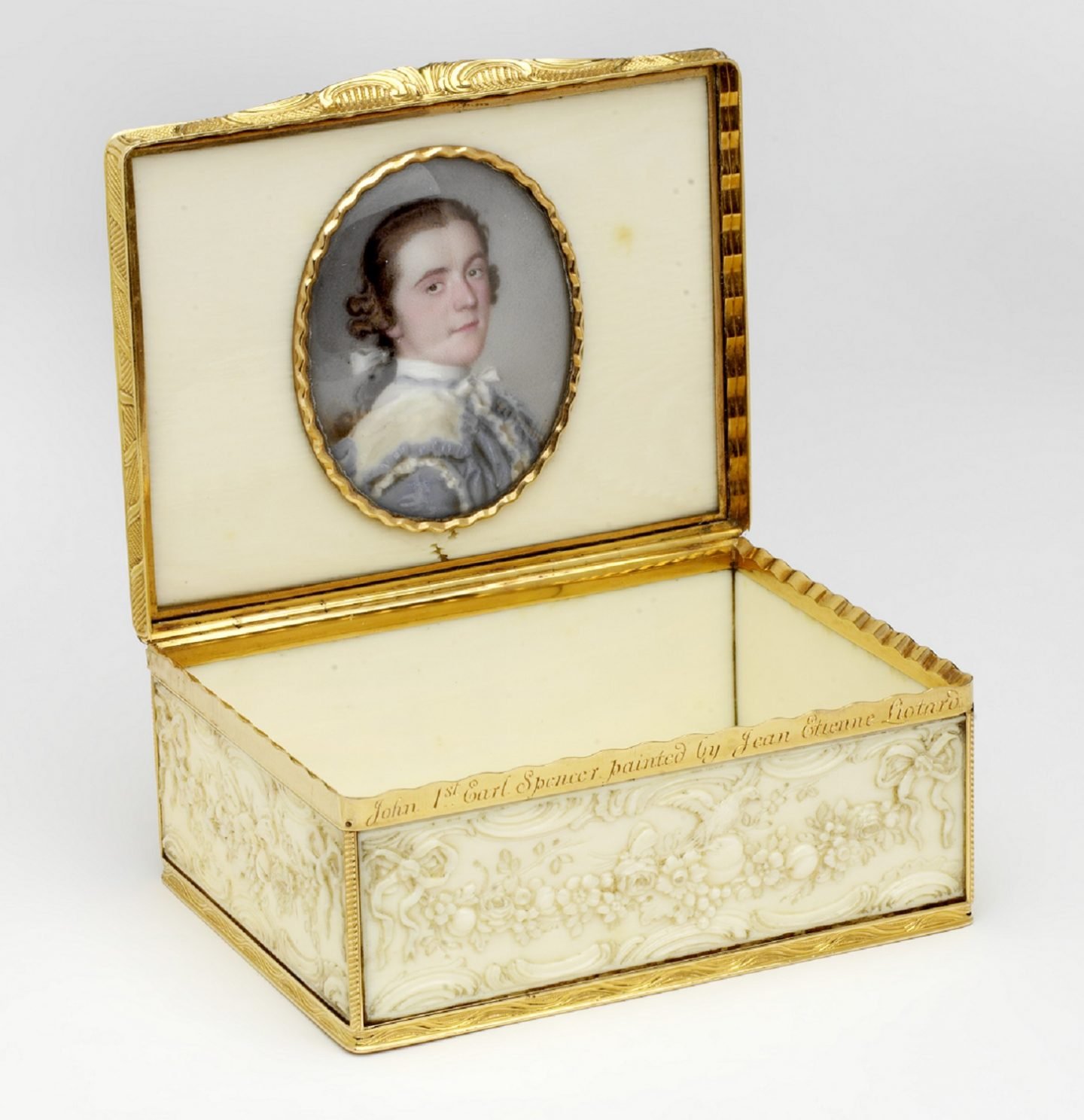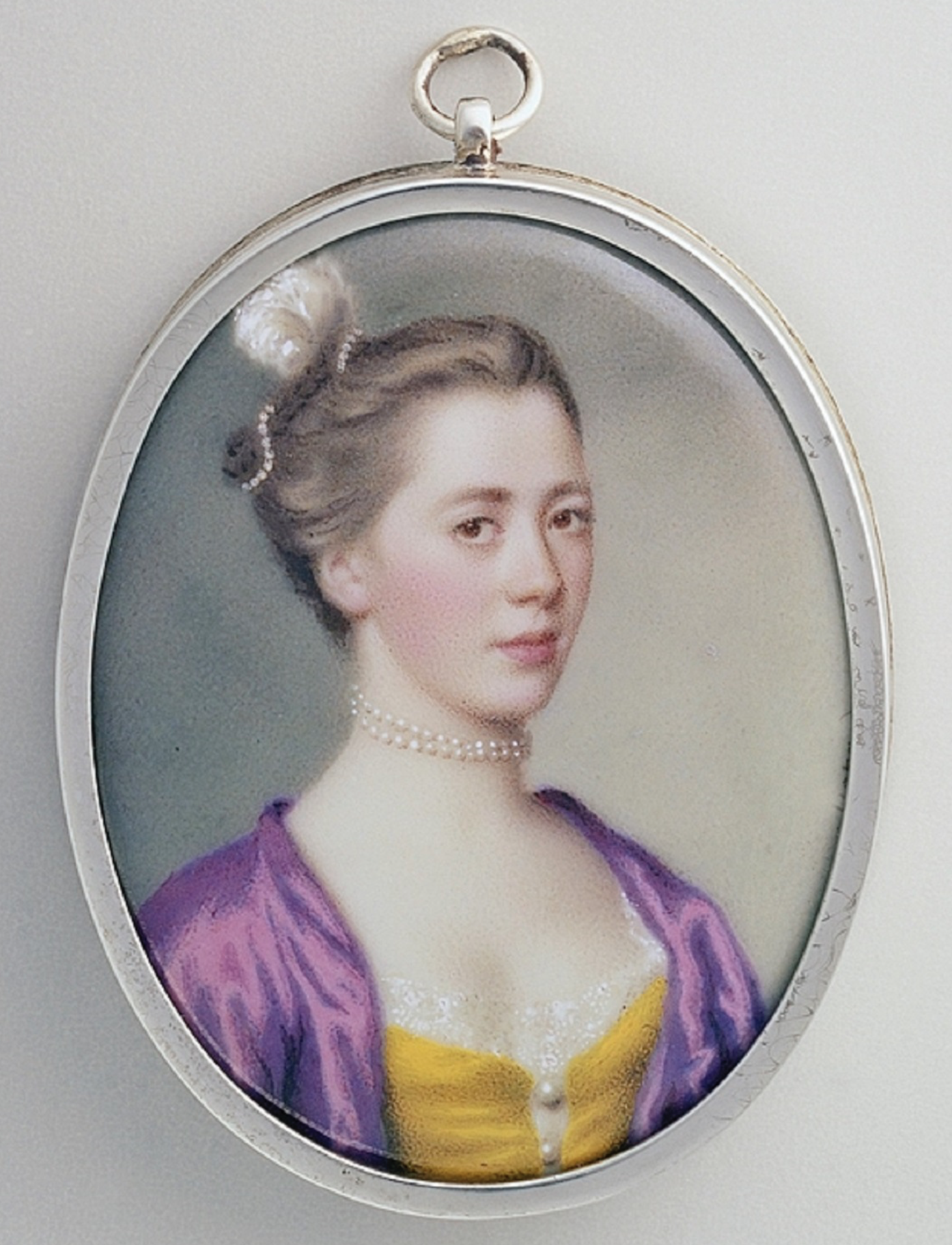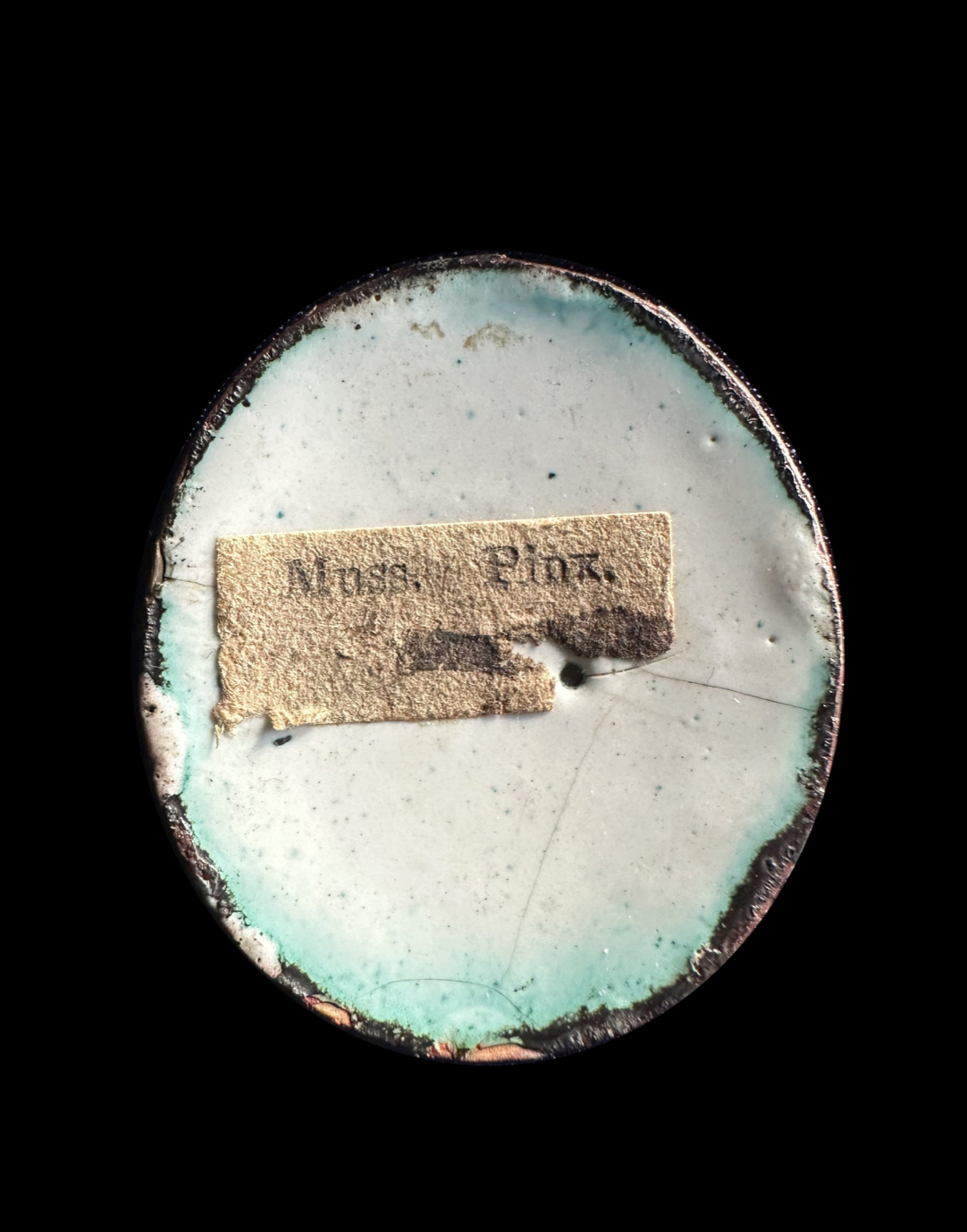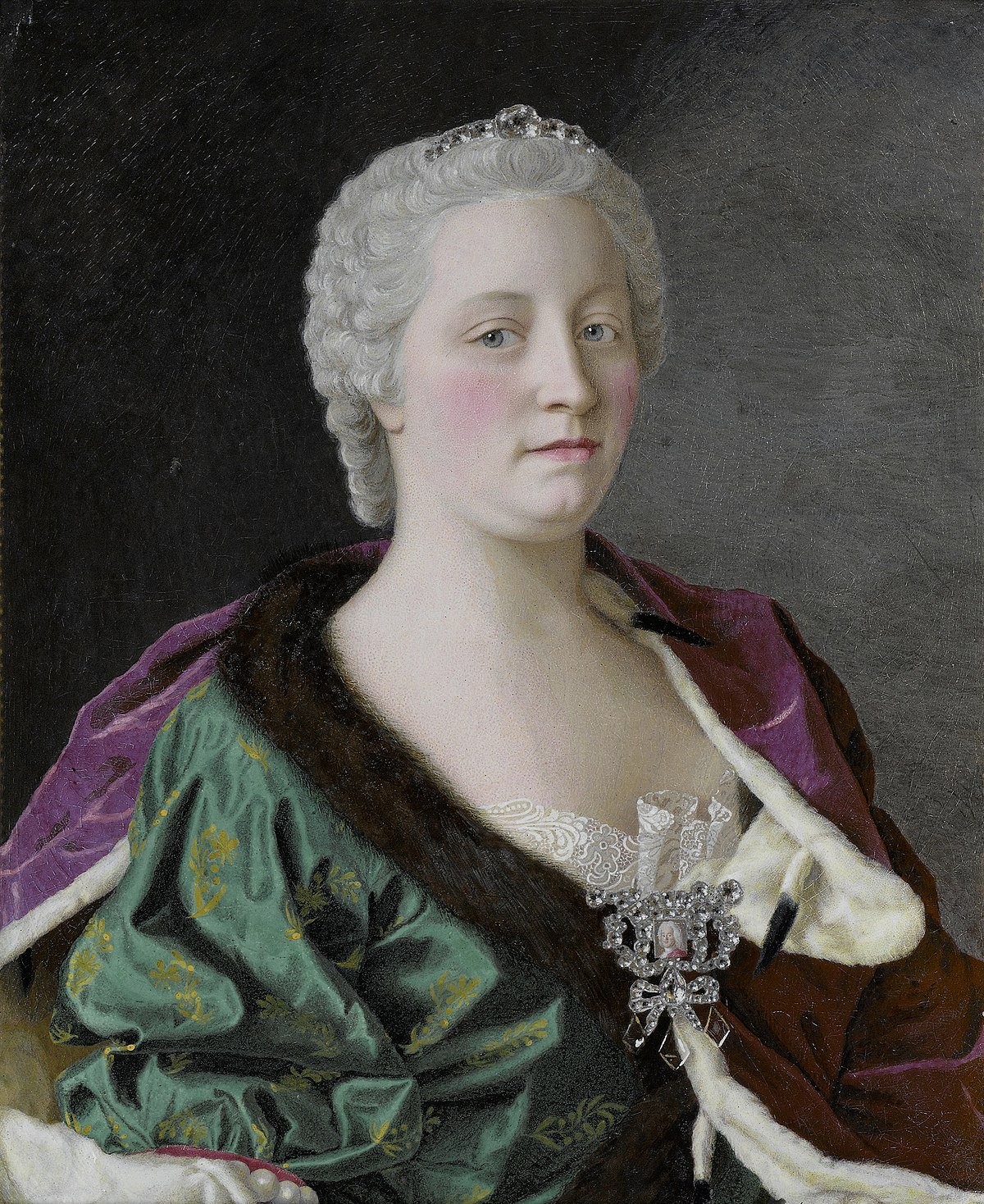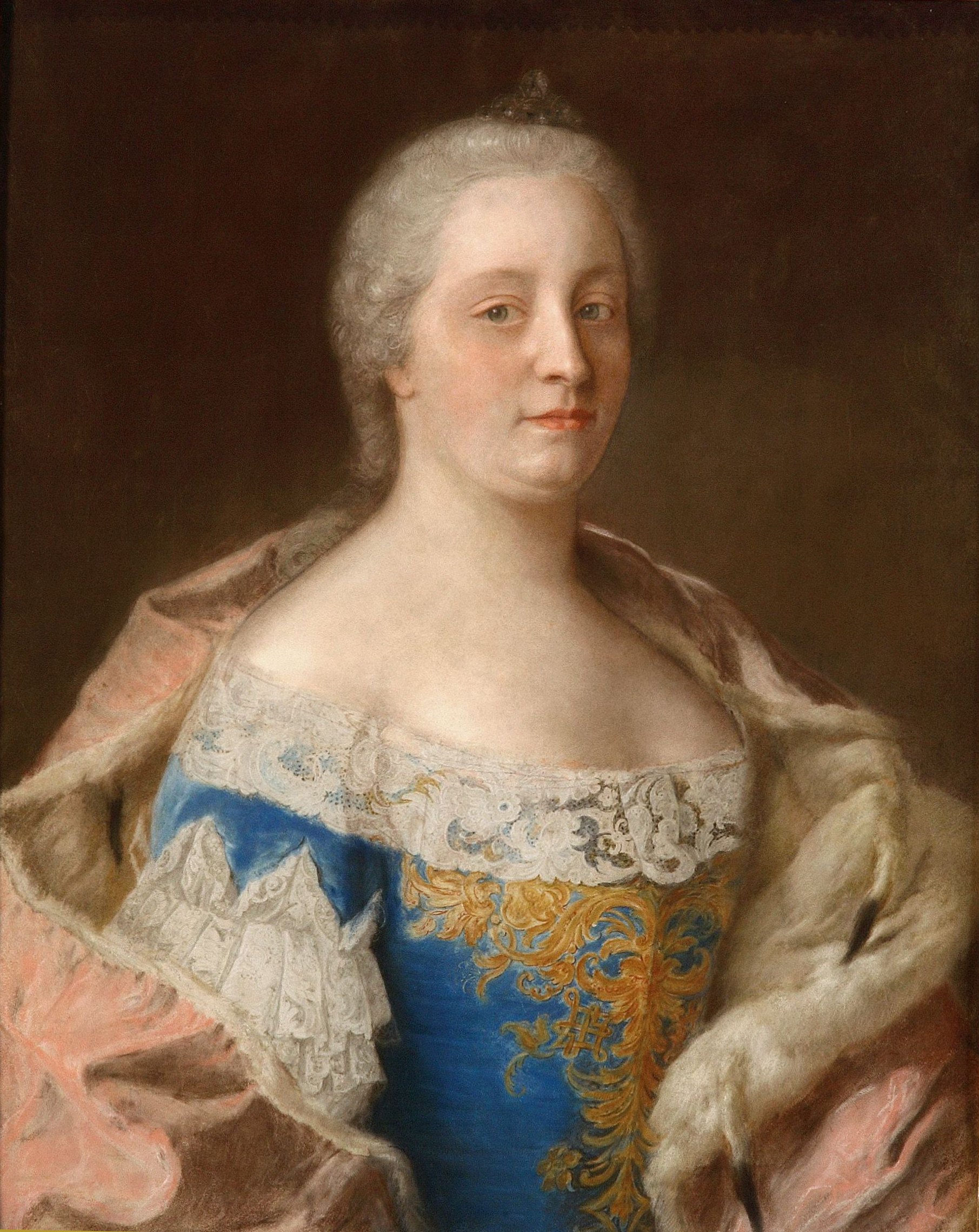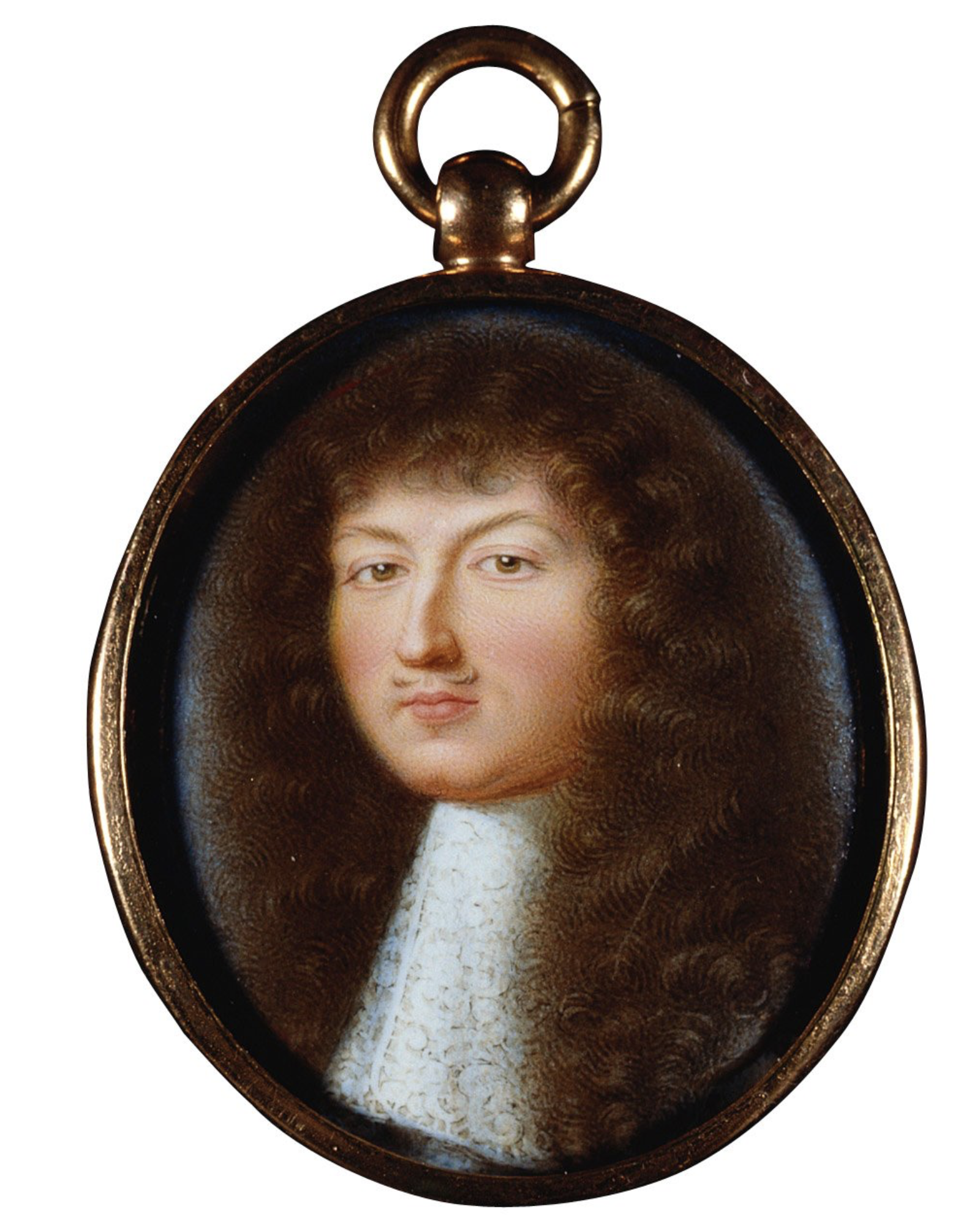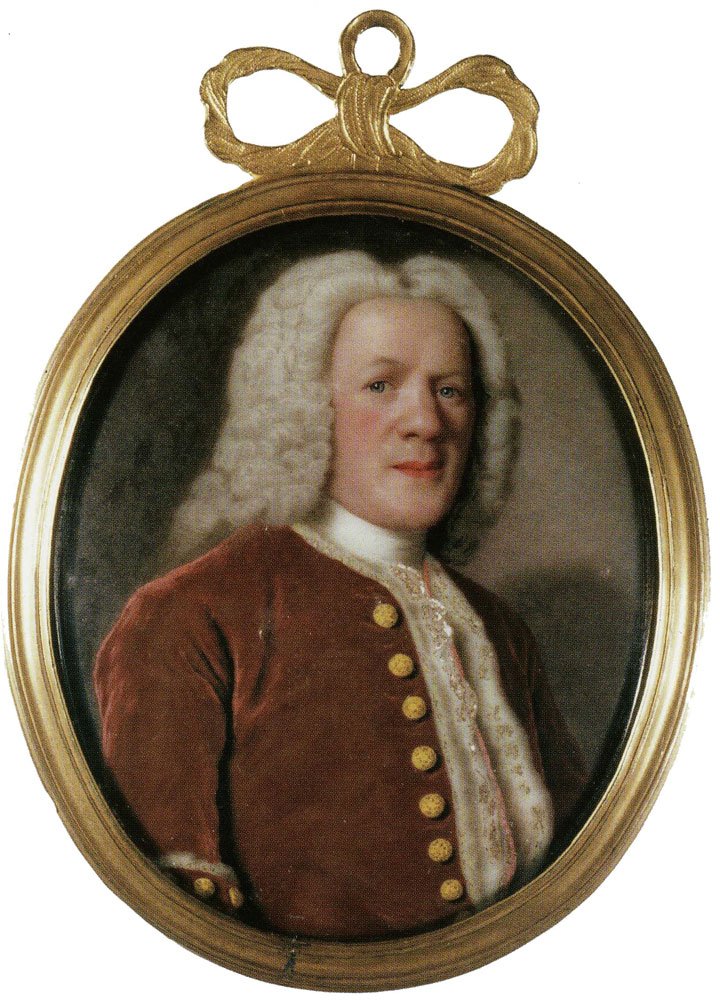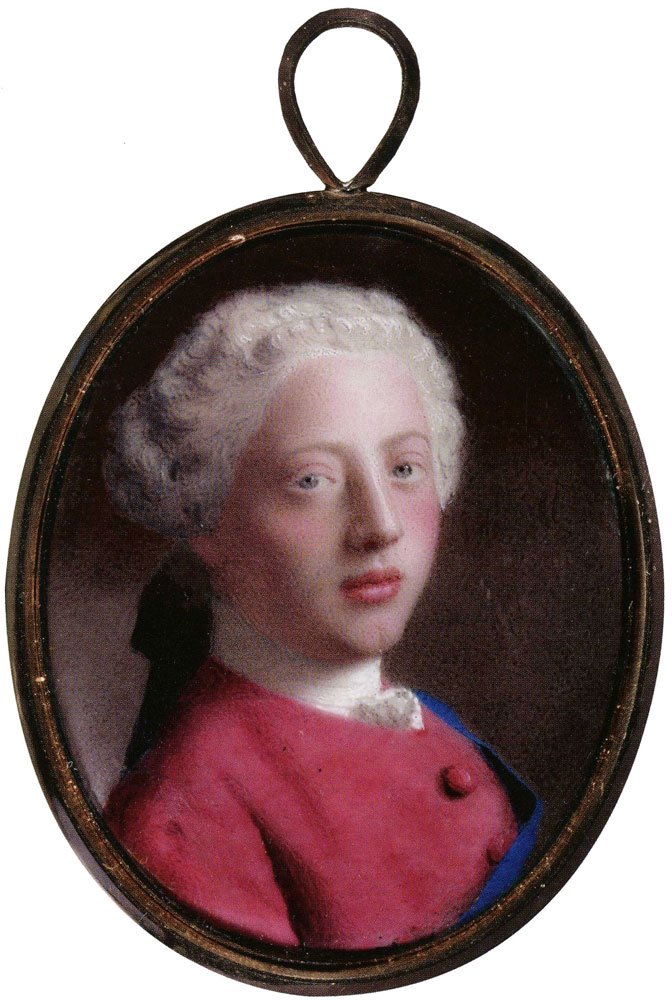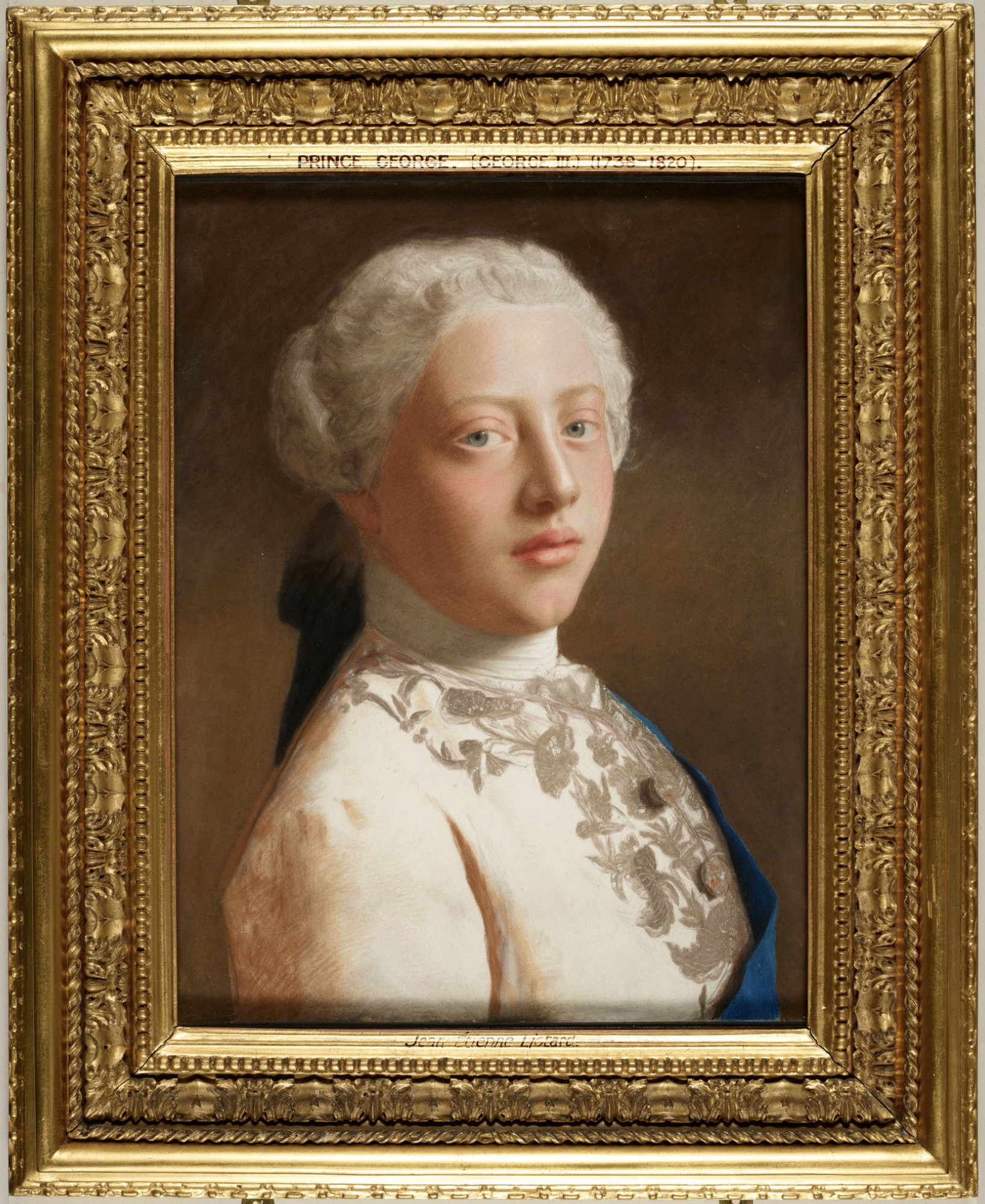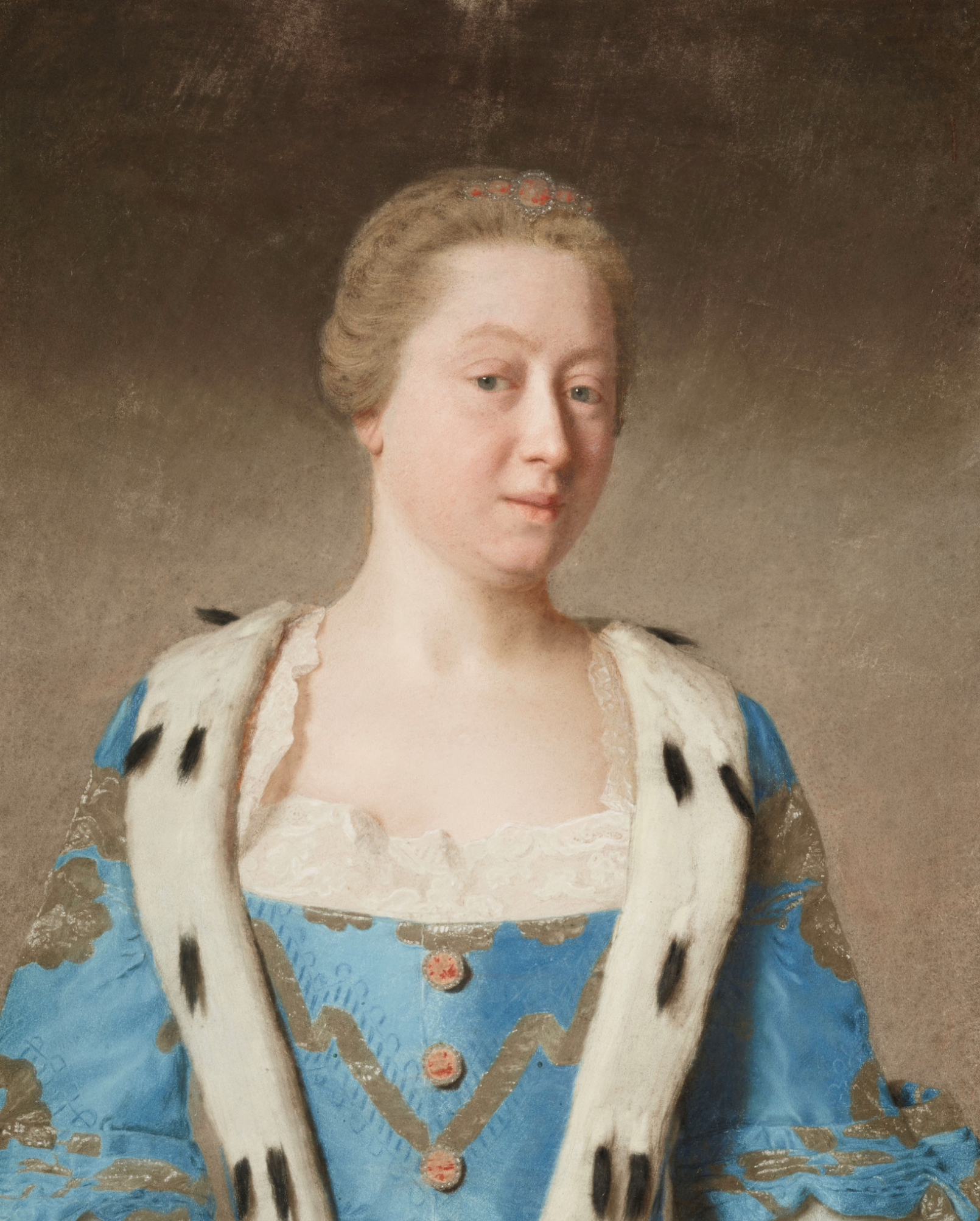Jean-Étienne Liotard as Enamellist
By Roxane Hemard | 20 January 2024
Jean-Étienne Liotard (1702-1789) needs no introduction as one of the leading 18th-century painters in pastel. The National Gallery’s current exhibition on the artist reunites Liotard’s spectacular pastel and oil versions of ‘The Lavergne Family Breakfast’, for the first time in 250 years, reflects the artist’s masterful skill and sensitivity to portraiture. The internationally acclaimed Liotard traveled extensively throughout his career, receiving commissions from royal courts in Constantinople, Vienna, France, England, and Moldavia. His high society and royal clientele, including that of Henriette of France, the Archduchess Maria Anna of Austria, and George, Prince of Wales, kept the Genevois artist artistically engaged and fruitfully wealthy. The rather idiosyncratic artist had the utmost range in his oeuvre, excelling as a draftsman, painter, and printmaker, and mastering multiple mediums, such as chalk, gouache, watercolour, pastel and oils. However, it is less known (or at least less acclaimed) that the Genovese painter was initially trained as a miniaturist and enameller, a skill of which he himself was very proud.
Fig. 1 Portrait enamel of John Spencer, 1st Earl of Spencer, enamel on copper, 1750 © Victoria and Albert Museum
Fig. 2 Enamel portrait mounted on gold-mounted ivory snuffbox. Length 8cm, width 6.5cm, height 3.7cm. Inscription on the rim of the box: John the 1st Earl of Spencer © Victoria and Albert Museum
Fig. 3 Portrait enamel of Georgina Pontyx, enamel on copper, 1754. Formerly of the Musée de l’Horlogerie et de l’Emaillerie. Stolen since 2002. Inventory no. AD 3721. © Musée d’Art et d’Histoire de Genève.
We have little insight as to where Liotard first learned the craft of enamelling. The earliest enamellers and portrait enamellers had come from the jewellery, goldsmithing, and watchmaking tradition, so it is perhaps his father, Antoine Liotard, a jeweller and goldsmith who fled to Switzerland after 1685, who first exposed Liotard to this medium. Although there is no evidence of this, the production of bijouterie did have strong links to engravers, miniaturists, and enamellers because of the popularity of engraved snuff boxes in precious metals during this period [1]. An example of these by Liotard is now at the Victoria and Albert Museum in London. The portrait enamel of John, 1st Earl of Spencer [2] (1734-84) painted in 1755 (fig. 1), is placed in a gold-mounted ivory snuff box (fig. 2) carved with a scene showing the family of the defeated Persian king Darius III kneeling before Alexander the Great.
It is known that Liotard held great admiration for the artistic legacy of Jean Petitot (1607-1691), a fellow Protestant Genevan portraitist in enamel and one of the celebrated figures in the medium. In Liotard’s autobiography, written in 1760, he iterates that he borrowed and copied numerous enamels by the great Swiss painter [3]. Petitot received his training from the pioneers of the art of miniature portraits in enamel, Jean and Henri Toutin, and subsequently went on to serve as an enamellist in the court of Louis XIV. In particular, 17th-century French and Swiss enamellers excelled in this medium, and were invaluable actors in a rich market of delicate pendants, boxes, and watchcases.
Liotard’s first apprenticeship in Geneva was brief to say the least, spending only four months under Daniel Gardelle, a specialist in miniatures on vellum and a distant relative of the Mussard family. Gardelle had occasionally worked in enamel, which the young Liotard copied with exceptional skill, according to his autobiography. Once Liotard left Geneva and arrived in the metropolis of Paris, he worked under the famous miniaturist, Jean-Baptiste Massé, who was also said to have painted enamels, unfortunately, none of which survived. It is impossible, however, to know if Massé taught Liotard the art of enamel.
Fig. 4 Example of counter enamel, J. Mussard (Active at the Society of Artists 1763-1768), From the Limner Company. Portrait enamel of William Henry, Prince William, later Duke of Clarence and William IV (1765-1837), circa 1780s
So what exactly is enamel? The intricacies of this difficult craft are often challenging to classify, bridging the realms of decorative and applied arts. Essentially, enamel is a type of glass coloured by metal oxides and fused to a metal or porcelain base by firing. Copper became the most common support by the 18th century, not only due to its affordability but because it could survive temperatures up to 100 Celsius, unlike gold or silver. A metal was first cut into a thin plaque, often less than 1mm thick, and then hammered to create a slightly curved surface, which prevented warping during firing. To create enamel paint, metal oxides were ground with water into a powder, adding oils such as lavender or sandalwood to transform it into paint. Before applying colours, a layer of white had to be fired on both sides of the plaque to prevent distortion. Perhaps the most difficult aspect of enamelling was applying colours. Each colour had different melting points and had to be applied individually, colour by colour, starting with the highest temperature colour. Firings took place in an oven generally fuelled by charcoal or wood, each firing lasting between 2-15 minutes. Before the invention of temperature-controlled kilns, enamellers had to have mastered the chemical properties of the different colours, as there was no way of correcting a mistake in this medium.
Fig. 5 Jean-Étienne Liotard, Self-Portrait, Enamel with Ivory backing encased in gilded Hatfield frame, 1753 © Royal Collection Trust
One of the most impressive enamel portraits by Liotard is undoubtedly his self-portrait (fig. 5), painted in 1753, now in the Royal Collection. Few are as exquisite as this oval gem, which some say even aroused jealousy in painters such as Sir Joshua Reynolds amongst others [4]. For lack of better words, it's stunning. Always one to be different, Liotard’s composition is rather unusual for the period. He paints himself in profile, alluding to noble portraiture of the Italian Renaissance, and dons a black-trimmed red felt fes traditionally used as a base around which a turban could be wrapped as well as a large Moldavian fur cap. The utter refinement and detail in both his facial features and fabric, notably the delicacy of his beard, proudly displays Liotard as a master enamellist with technical vivacity, but also as his self-proclaimed persona, ‘le Peintre Turc’ / ‘The Turkish painter’.
He was proud of his talents, one could say even arrogant as he never shied from boasting his artistic flair. So what better way to impress patrons than with such a technically challenging medium, on a scale none had seen before? His enamel on copper portrait (fig 6) of the young Maria Theresa, Archduchess of Austria, now in the Rijksmuseum, measures an astounding 62 cm by 51cm. It is not only Liotard’s largest portrait enamel, but one of the largest made in history. The colouration in her cheeks, the impeccable detail in her fur trim and glistening eyes, was already prodigious with this medium, and yet, upon closer inspection we find more detail. In her diamond brooch holds a miniature painting depicting her husband, Francis of Lorraine, Holy Roman Emperor (1708-1765). Here, Liotard not only proves his command of enamel, but boastfully advertises it on both a large and miniature scale.
Fig. 6 Portrait enamel of Maria Theresa, Archduchess of Austria, Queen of Hungary and Bohemia, and Holy Roman Empress, enamel on copper, 1747. Rijksmuseum, Amsterdam
Fig. 7 Empress Maria Theresia of Austria, pastel on parchment, from 1743 until 1745. Museum Mayer van den Bergh
The Swiss painter did not just have astounding range in his oeuvre but was a bold innovator. The most common technique of enamelling had previously been that of Petitot’s, characterized by fine stippling which required strong magnification to see the work of the brush (fig. 8). Liotard on the other hand often used bold and visibly thick dotting which from afar gave a more pronounced and striking impression [5], as seen in his enamel on copper of Sir Everard Fawkener [6] (fig 9). Sarah Coffin and Bodo Hofstetter amusingly compare Liotard’s impasto-esque technique to that of Seurat or Signac in the late 19th century. It takes one a very long time to accept this portrait as an enamel simply because of the impressive sfumato effect Liotard is able to achieve. The brilliantly executed velvet coat of Fawkener gives us the impression it was painted in oil on canvas, and the detail of the sitter’s shadow gives the work beautiful verisimilitude.
Fig. 8 Jean Petitot (1607-1691), portrait enamel of Louis XIV (1638-1715), c.1660 © Royal Collection Trust
Fig. 9 Portrait enamel of Sir Everard Fawkener (1694-1758), enamel on copper, 1754. Ashmolean Museum, Oxford
Liotard persistently experimented with new techniques, an example of which was enamel painted on glass as opposed to metal. The magnificent result was that the painting became virtually transparent, and could thus be lit from behind creating this vibrant effect of light and shade. The genre of transparent pictures can be traced back to Renaissance Kabinettscheiben [7], and following Liotard’s success with them, artists such as Thomas Gainsborough and John Constable also became interested in the genre [8]. The 18th-century art collector and friend of Liotard, Horace Walpole, described the artist’s enamel on glass technique in 1722 as such,
“And some pieces of glass painted by himself with surprising effect of light and shade, but a mere curiosity, as it was necessary to darken the room before they could be seen to advantage; he affixed too, as usual, extravagant prices to them.” [9]
A virtual obsession with light explains Liotard’s striking colouration and chiaroscuro in his enamels. One could argue he retained many of his enamel and miniaturist instincts as a pastellist and oil painter, particularly when it came to his use of light and dark to create a naturalistic effect. A good comparison is his portraits of George, Prince of Wales. In 1754, Augusta, Princess of Wales, mother of George III, commissioned numerous portraits of her children from Liotard. A pastel on vellum and an enamel (fig. 10 & 11) of the 16-year-old Prince were made, both in the same pose, wearing a blue sash signifying their position in the Order of the Garter, but with different hue coats. The incredible tonal qualities captured in the pastel portrait, accentuating the light and shadow as they define the volume of George’s face and shoulders are almost identical in the more complex and temperamental medium of enamel. The vividly lifelike detail of George’s flushed cheeks manifests Liotard’s unwavering powers of observation.
Fig. 10 Portrait of George, Prince of Wales (1738-1820), enamel on copper, 1754 © The Trustees of Sir Walter Luttrell's Will Trust, care of Robert Holden Ltd
Fig. 11 Portrait of George, Prince of Wales (1738-1820), pastel on vellum, 1754 © Royal Collection Trust. One of the ‘Nine Portraits of the Royal Family’.
Throughout all mediums, Liotard was committed to realism or the “warts-and-all” approach one could say. Unlike many artists of the period, he refused to idealise, or in some cases even compliment, his sitters. He preferred instead to portray them as he observed them. While his less flattering portrait enamels haven't endured the test of time, a mere glimpse at his pastel depiction of Augusta, Princess of Wales, (fig. 11) now in the Royal Collection, provides enough insight into why fragile enamel counterparts might not have been retained as cherished personal possessions. However, Liotard’s pragmatic approach for the most part results in an unprecedented candour in his portraits, giving the viewer a sense of reality, directness, and intimacy. Walpole again writes of Liotard’s characteristic lack of flattery:
‘[Liotard’s] likenesses were as exact as possible, and too like… Freckles, marks of the small-pox, every thing found its place…. Truth prevailed in all his works, grace in very few”. [10]
Whilst many patrons admired Liotard’s unreserved and candid depictions, some were not openly infatuated, to put it mildly. The iconic Royal mistress and patron of the arts, Madame de Pompadour, was seemingly less than pleased with Liotard’s unflattering depiction of her, rejecting the portraits with the words “Votre barbe fait tout votre merite” (“Your beard is all your merit”). [11]
Fig. 12 Augusta, Princess of Wales (1719-1772), pastel on vellum, 1754 © Royal Collection Trust
Fig. 13 Presumed portrait of of Madame de Pompadour (1721-1764), black and red chalk on prepared value, circa 1750. Fondation Custadia / Collection Frits Lugt. The original painting has since been lost.
Jean-Etienne Liotard's newly revitalized recognition as a genius pastellist is thoroughly deserved. However, it is important to remember he never abandoned his roots in the world of colourful and highly precious objects throughout his career. He was not just a brilliant pastellist or oil painter nor was he simply a miniaturist or enamellist. He was a brilliant portraitist, ruthlessly self-promoting himself as such through countless different mediums. During a period when thousands of emerging portrait painters flocked to Europe, particularly in London, Liotard had to distinguish himself to secure success. By dipping his toes in the realms of decorative arts, fine arts, and luxury goods, Liotard was able to amass a heterogeneous market of portraiture like no other, excelling in every medium he touched.
“Avec ce réalisme bien compris qui, loin d'éloigner de l'idéal, y conduit, Liotard pouvait être à la fois attaché à la tradition et novateur, classique et romantique, conservateur et progressiste, fils de son époque et déjà de la notre; mais par-dessus tout il était lui, ami de l'indépendance, ennemi de la mode, de la routine, des préjugés.” [12]
— Edouard Humbert, 1897
(“With this well-understood realism which, far from moving away from the ideal, leads to it, Liotard could be both attached to tradition and innovative, classic and romantic, conservative and progressive, son of his time and already of ours ; but above all he was, friend of independence, enemy of fashion, routine, prejudice.”)
[1] Bull, Duncan. 2002. Jean-Etienne Liotard, 1702-1789, p. 4
[2] Liotard met the Spencer family through William Ponsonby, Viscount Duncannon, whom the artist relied on tremendously for introductions and commissions in London. Duncannon’s son, Frederick Ponsonby married Henrietta Spencer, John Spencer’s daughter. In 1754, the Earl Spencer had also commissioned Liotard to paint his betrayed Georgina Poyntz (fig 2). The enamel on copper has been stolen since 2002.
[3] Jeffares, Neil. “A Liotard Sleeper.”, p. 2
[4] Baker, Christopher. 2015. Jean Etienne Liotard : 1702-1789, p. 22
[5] Coffin, Sarah. Hofstetter, Bodo. 2000. Portrait Miniatures in Enamel, p. 24
[6] Horace Walpole introduced Liotard to Sir Everand Fawkener at the end of March 1753, when he had been appointed secretary to the Duke of Cumberland, George II’s youngest son. Liotard is known to have painted three enamel portraits of Fawkener, including this one. It is likely Fawkener requested the medium of enamel for his portrait, no doubt influenced by his own collection of gems and miniatures, a collection that had been praised by his friend Voltaire. Baker, Christopher, p. 198
[7] Kabinettscheiben were small, highly detailed painted stained glass panels which gained tremendous popularity in Renaissance Switzerland. The Swiss custom of give these panels as gifts lasted until the early Enlightenment. Swoboda, Gudrun. 2012. [Jean-Etienne Liotard (1702-1789), p. 8.
[8] An example of Gainsborough’s painting in oil on glass, or “showbox”, is now at the V&A. Room 88.
[9] Swoboda, Gudrun. 2012. [Jean-Etienne Liotard (1702-1789), p. 8
[10] Walpole 1762-71, vol.4, p.90; see Roethlisberger and Loche 2008, vol.I, p. 97.
[11] Roethlisberger, Marcel, and Renée Loche, p. 102
[12] Humbert, Ed. & M. Alphonse Revilliod & J.W. R. Tilanus. 1897. La Vie et les Oeuvres de Jean Etienne Liotard (1702-1789), p. 43


